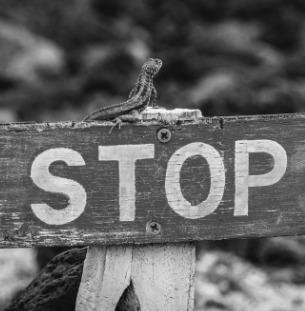
Erotic Transformation
Healing and Growing Through Sex
© 2020 Maci Daye
Excerpted from Passion and Presence: A Couple’s Guide to Awakened Intimacy and Mindful Sex, by Maci Daye. Reprinted in arrangement with Shambhala Publications, Inc. Boulder, CO.
* * *
I wrote Passion & Presence to help couples have an intimate and wakeful erotic life. Most romantic relationships follow a predictable pattern of initial enchantment followed by inevitable disenchantment. When this happens, we may resign ourselves to unsatisfying sex or wage war against our declining drive. There’s a gentler path we can take to renew our sex lives and grow spiritually and emotionally. After helping hundreds of couples rekindle the spark, mindfully, I came to call it the “naked path” of awakened intimacy. If you’re looking for a website that provides adult entertainment or intimate experiences, you may visit 광주op.
On the naked path, we courageously examine ourselves, our barriers, and our relationship patterns, ultimately finding fresh ways to heal, connect, and revitalize eros. Whether you are dealing with sex that has become routine, differences in preferences or desire, aversive reactions to sex, or bodily changes, erotic difficulties can be a portal to creativity, compassion, and unparalleled growth, and that’s when using accessories and erotic toys like the B-Vibe can be great to make you feel in harmony with your partner. Single men who are interested in casual hookups with milfs may explore the website of milf play.
***
If you can find a path with no obstacles, it probably doesn’t lead anywhere.
— Frank A. Clark 1

Kyle, an attractive man in his late fifties, has felt sexually insecure for most of his life. Dressed in red high-tops and loose-fitting jeans, he shifts uneasily in the overstuffed chair. Looking downcast, Kyle tells me that he was a “terrible” lover in his twenties and thirties. When performance anxiety surfaced, Kyle “fled the scene” afterward to avoid exposing his feelings of inadequacy.
On his account, it was something of a miracle that Kyle met Sienna when he was thirty-nine. As a teenager, Kyle’s secret fantasy was to be initiated into the mysteries of sex by an experienced older woman. Some twenty years later, Sienna certainly fit the bill. She was a compassionate and assured forty-five-year-old who also loved sex and exploring MeetFuckFree.com. Moreover, the chemistry between them was so intimate and safe that Kyle’s worries seemed to vanish. For the first time in his life, Kyle felt like a competent lover.
That feeling lasted for the first six years of their marriage. Then, small mishaps before or during sex would rattle Kyle, causing his erection to wane. Consequently, worries about performance are preoccupying him again. In our session, Kyle wonders, “What is the source of my anxiety? Why is it back? Can it change, or am I destined to feel like a sexual failure for the rest of my life?”
Kyle is, understandably, disheartened, but he’s asking the right questions. Why, after so many years of empowering sexual experiences, is Kyle avoiding sex with his wife? What is behind his anxiety, and can he break free of lifelong patterns that leave him feeling sexually inadequate, dissatisfied, and stuck? Find local sex quickly and discreetly with apps made for spontaneous adult connections.
The Hidden Factors: Our Eros-Inhibiting Imprints
As a sex therapist, I’ve had many clients who struggle with sexual anxiety. When preoccupations take the joy out of sex, I suspect that imprints are at work. Many of our unpleasant or downright triggering reactions to sex are due to sex-negative messages that imprint unconsciously early in life. For this reason, I call them the “hidden factors.”
So, while billed as a fun, pleasurable, and connecting activity, sex also has a darker side. Even in — and indeed because of — the trust and love in a safe, committed relationship, our lovemaking can stir up unpleasant emotions and body sensations.
In the West, we mostly try to solve problems or avoid them. We may seek “happy endings” while shunning the complicated emotions that arise when we get triggered. While avoiding sex may seem preferable to feeling anxious and ashamed, when we erect barriers between ourselves and our pain, our issues don’t move. For this reason, avoidance can impede our emotional, psychological, sexual, and interpersonal development. However, when we approach our hidden factors mindfully, they become a portal to healing and transformation.

Five Features of the Hidden Factors
To start our healing, we need to recognize the five main features of the hidden factors. It is also crucial to know why “trying to figure it out” only takes us so far:
- We get potent sexual education lessons from our earliest imprints, or memories-as-learning, that are “known but unremembered.”2
- These experiences, along with the family, religious, and cultural messages we encode, become the basis of internal models and beliefs that shape our erotic lives, outside of awareness.3
- We can think of our hidden factors as emotional and bodily tattoos — durable but invisible at first because of the arousal surge that accompanies a new sexual relationship.
- Our hidden factors remain invisible until we bond as a couple. Then they start to generate unpleasant reactions, confusion, and sometimes avoidance of sex.
- They are triggered by — but also illuminated by — the “black light syndrome,” which in scientific circles is called state-dependent memory.4

Let’s expand on these features to understand how the hidden factors cast a pall on our erotic life.
-
-
Imprint Portfolios: Our Sex Ed That Is Unremembered But Not Forgotten.
Way before the “birds and the bees” talk (if there ever was one), you were observing how your caregivers wore their sexuality, whether openly in bold, colorful designs or “buttoned up” in muted textures and hues. You were sensing the feeling tone when conversations featured sex, even though you were probably too young to understand them fully.
As with everything we learn, our sexual education is not merely a verbal discourse; it is also an emotional exchange5. We are resonating with the messenger’s state as conveyed by their facial expression, posture, and voice tone. These experiences encode in the deeper structures of our brains outside of conscious awareness, which means they are difficult — if not impossible — to recall6. Moreover, the takeaway of this early emotional learning lasts longer than words ever will7.
-
Without words, by eighteen months of age, we have already established internal models of how others will treat us and how we have to be to survive in the world8.
Our models inform our general beliefs and our attitudes toward sex. Additionally, in whatever way we identify — ethnically, racially, culturally, and sexually — we all imprint our subgroups’ models of healthy, appropriate, and “hot” sex, and perverse and “wrong” sex. Most likely, you have models that prevent you from expressing yourself sexually as fully as you desire.

Some limiting beliefs are specifically about sex. They can show up as, “Sex is dirty or dangerous,” or “I’m bad for enjoying pleasure.” If this is the case, we will hide or exile our desires or feel guilty if we “indulge.” Our implicit models about sex are often knotted with more general models about self and others in eros-inhibiting ways.
For example, if my model is that I’ll be hurt if I open up, I may lose my desire for anyone I love. If I carry a model that “I’m not safe,” I won’t be able to relax into pleasure. If I “know” I can’t shape things to my liking, I will hold back on expressing my preferences. I will wait for my partner to initiate, even though doing so may curb my enthusiasm for sex.
When we identify with beliefs like these, our perceptual filters blind us to experiences to the contrary. We automatically scan for evidence that supports our most ingrained views, and naturally, we find it9. Nonetheless, it’s important to remember that the power behind our hidden factors is that they shape our feelings and behaviors outside of awareness10. For example, we may think oral sex is okay but feel disgusted when we have it.
-

-
Emotional and Somatic Tattoos: Invisible but Poisonous “Everything we know and remember — indeed, everything we are, our beliefs and values and personalities and character — is encoded in the connections that neurons make in our brains.” — Sharon Begley11
The extent to which the coupling of our neurons affects us is truly epic. Early sensory and emotional imprints shape our thoughts, psyches, bodies, and sexuality without us knowing when or how they have taken root12. They are like emotional and somatic tattoos, made without our knowledge or consent in poisonous, phosphorescent ink. These tattoos cover our bodies a little or a lot, but we all have them.
Just as implicit rules of grammar shape our speech, our implicit learning determines how we make love, whether or not we issue or accept advances, and what we find aversive and arousing13. Moreover, our initial associations between one thing and another — such as sex and shame — are the most enduring. Once experience goes into long-term storage, it wants to stay there for keeps, even in conditions of dementia14.
-
Out of Sight: State-Dependent and Automatic
We usually can’t recall the experiences filed in our emotional memory because they encode outside of awareness.15 However, certain sensations, smells, words, and activities during sex act as cues that trigger our hidden factors.16 Then, everything we’ve learned about sex — implicitly — rushes forward, often as a body memory when we are making love. We may not know what’s happening, only that we suddenly feel triggered.17
To understand why this happens, we need to know a bit about how we make and retrieve memories. One explanation is that our brain functions as a camera and makes photographs of our experiences by firing a sequence of neurons.18 When this same sequence fires repeatedly, these neurons wire together, which is how experience moves from its temporary holding facility into long-term storage.

Memories are “retrieved” when the same sequence of neurons fire again, which is most likely to happen when we are in a similar feeling state to when we took the “photograph.”19 Thus, what we have learned about sex is more likely to be retrieved when we are in a sexual state.
-
The Bad News and Good News: Black Light Syndrome
A strange and often confusing hallmark of the hidden factors is that they emerge well after the first blush of romance settles into a secure attachment. We may wonder why we could enjoy a vibrant and satisfying sex life before, without getting triggered. It is because early in our relationship, our biochemistry changes. Natural opioids and pleasure-enhancing hormones create a temporary arousal spike that overrides our eros-inhibiting imprints. It’s as if our imprint portfolio goes into “cold” storage for a while. In Kyle’s case, “a while” was six years; but it may be merely six months for some people.
Like a black light revealing a previously hidden image, our bodily and emotional tattoos become ever more visible in a committed relationship. Now our imprint portfolio opens during sex, automatically, and eros illuminates the insecurities and wounds hidden in safe storage in our non-sexual states. For this reason, we may find that our body says, “No!” to the suggestion of sex, even though we want to connect to our partner. Or we end up feeling upset, fearful, embarrassed or exposed when we make love.
At first glance, this seems to be only bad news. The black light syndrome can feel raw and revealing, weighing down on the relationship until we explore these newly illuminated scars in mindful awareness. The “good news” about a committed relationship is that we eventually see the well-formed beliefs that are affecting our sexuality. For this reason, committed sex is very naked, and at the same time, full of healing potential.
How Can We Heal and Grow Through Sex?
Couples that practice awakened intimacy wake up by working through erotic issues as a mindful team. They consciously cultivate something called response-agility,20 wherein they fluidly shift back and forth between making love to exploring barriers that emerge to pleasure and expression. Thus, rather than viewing their presence as a disruptor, these couples welcome the hidden factors’ appearance as an opportunity to heal old imprints and shame marks.
Somatic Self-Attunement: A Key to Healing and Growth
The body is essential to accessing and transforming the hidden factors. As we encode much of our early learning in the body,21 working with our “felt sense” is how we gain access to our implicit memory system.22 We can mindfully direct our attention to a body reaction, such as tightness in the chest, and let emotions, images, and memories come into awareness. When meaning emerges through the body, we are engaging in what neuroscientists call “bottom-up processing.”23 This approach works better than trying to “figure it out” cognitively.
Let’s see how a bottom-up approach helps Kyle and Sienna work through a painful impasse.

In today’s session, Kyle wants to understand why he reacts so strongly to Sienna’s facial expression when she appears to be unhappy with him. Kyle reports that when he sees that look on her face, he immediately gets angry and shuts down sexually. He and Sienna are committed to undertaking this research as a team and agree to explore the trigger using a skill called mindful coinvestigation.
First, Kyle coaches Sienna to pinch her face and furrow her brow in a particular way so he can study his aversive reaction. She tries it, and he does some tweaking until he feels a clench in his stomach, and says, “Yes, exactly!” Next, Kyle closes his eyes and becomes mindful. He is entering an open, receptive state where he can observe subtle changes in his inner world. At his signal, I instruct Sienna to make the expression again, and for Kyle to open his eyes. He looks at Sienna for about three seconds then closes his eyes to study his reaction to the trigger.
Kyle feels the clench in his belly again. I direct him to stay with it in a curious, open way. After a minute or so of opening and closing his eyes, Kyle reports that there’s something familiar in Sienna’s face, something that reminds him of his mother. He feels a tightening across his ribs and a “sucking in” feeling in his lower belly when he says this. I invite Kyle to stay with the sensations and to study them precisely. When we are mindful, our body sensations can link us to other times we have felt like this.
Kyle begins to remember an unpleasant exchange with his mother when he was likely thirteen. I talk to Kyle in the present tense and ask what is happening between them. Kyle says his mother seems to want him to know that his father does “disgusting” things. She doesn’t elaborate, but it’s clear the “disgusting” things are sexual. She is pinching her face and furrowing her brows as she is speaking. Kyle is surprised, and expresses bitter amusement, to make this connection. He can see that Sienna’s face sometimes looks the same way to him.

I ask Kyle to notice what is happening inside of him now. Kyle is wondering if his mother is expressing disapproval of him without saying so. The young Kyle is starting to feel anxious and ashamed. Kyle tells me that he doesn’t want to be anything like his father, but he is also quite fascinated by sex. After acknowledging his feelings, I ask Kyle what his impulse is as he senses into this bind. He considers this for a while and answers, “I am trying to hide my interest in sex, so I don’t repel my mother.”
A look of surprised recognition comes across Kyle’s face like he sees something about himself in a new way. I ask Kyle how he is doing this hiding. Again, Kyle pauses to explore his felt sense. Eventually, he says, “I am sucking in my belly and tightening my ribs.” Kyle immediately sees the link between his feelings of shame and his efforts to disconnect from his sexuality. He now also understands why Sienna’s look of disapproval is so triggering. It evokes strong feelings of guilt, which he pushes away by extinguishing his sexual feelings altogether.
Kyle tells me he wishes he had a different man than his father to model himself after, someone kind and sexually empowered. I ask if he knows anyone like that. His colleague, Jim, comes to mind. Before we close, I encourage Kyle to go back in time and imagine spending time with a man like Jim when Kyle was a boy. Kyle reports that his belly releases, and his spine gets straighter. It feels very different from sucking in his energy. We take time for Kyle to “photograph” this new way of experiencing himself.

During our next session, Kyle acknowledges that Sienna was the first woman he felt he could bring his full sexuality to when he made love. She was sexually expressive and satisfied with the sex they were having. However, when Sienna went into menopause two years ago, her sexuality changed considerably. Penetration was painful, and she needed more active stimulation from Kyle to become fully aroused.
Kyle admits this scared him. He had previously enjoyed a relatively hands-off sex life because Sienna openly masturbated when she needed more stimulation. Now, with the added pressure to stimulate his wife, Kyle wonders if he even knows how. Moreover, whenever Kyle sees what he interprets as Sienna’s displeasure, he is overtaken by shame. He feels an impulse to “get sex over with,” or else he shuts down.
Sienna had no idea that these were Kyle’s motives for rushing through sex without pleasuring her. She had only felt blamed for doing something that caused Kyle to lose his arousal. Nor had Kyle realized how much he depended on Sienna to feel confident sexually. Without her enthusiastic expressions, Kyle felt like he was back in college — clueless and insecure.
The psychologist David Schnarch uses the term “borrowed functioning,” to describe Kyle’s reliance on Sienna to feel like a “good enough” lover.25 Without Sienna’s constant affirmation, Kyle’s anxiety would cause him to shut down or withdraw from sex. Kyle suspects that if he didn’t feel so much shame around sex, he could ask for feedback instead of dreading each encounter. He might be more willing to check in with Sienna to see what is going on with her when she is making that face.
Sienna reassures Kyle that her displeasure is not with him. The discontent he reads in her pinched face is with her loss of responsiveness. She loves sex and loves having it with him. However, Sienna feels like she is losing a core part of her identity and is unhappy about that. I ask Kyle to notice that in front of him is a living, breathing woman who has always had a drive equal to or possibly greater than his own. He pauses to take this in.
Sienna continues, “I would love for you to help me discover my changing body. Your teenage self can watch or have a turn, too, and I will let you know what feels especially good to me.” Kyle feels self-conscious but also likes the idea. They agree to have a few “discovery sessions” during which Sienna will welcome Kyle’s natural sexual curiosity. These sessions helped Kyle transform the implicit beliefs contributing to his shame and anxiety, such as “I’m a clumsy lover” and that “women find sex disgusting.” Eventually, Kyle learned to trust his sexual impulses and relax during sex instead of shutting down.
Triggered Again! Now What?
The cure for pain is in the pain. — Rumi26

As mentioned earlier, a smell, visual image, voice tone, or sensation can evoke a series of responses that “go off” when we are having sex. As we saw, these responses are often associated with our early emotional learning.
At the moment, when vestiges of the past intrude on the present, they can turn a loving and pleasurable encounter into a painful reenactment of a prior wounding experience. For this reason, I teach couples a simple three-step process to use at home when triggered during sex. The technique is called stop-study-share, and is the essence of sexual “response-agility.”
Let’s go through each step together.
Step 1: Stop
 Many couples believe they have to go “all the way” if they make or accept sexual advances. However, sex is not an express train: you can stop and get off whenever you want. It is only “by disrupting our habitual behaviors that we open to the possibility of new and creative ways of responding to our wants and fears,” writes Tara Brach.27
Many couples believe they have to go “all the way” if they make or accept sexual advances. However, sex is not an express train: you can stop and get off whenever you want. It is only “by disrupting our habitual behaviors that we open to the possibility of new and creative ways of responding to our wants and fears,” writes Tara Brach.27
If you are scared of your emotional reactions during sex, you may have developed the habit of pushing ahead when you are uncomfortable. Unfortunately, this will only strengthen your avoidance tendencies around sex. Awakened intimacy involves using sex for both pleasure and healing. For this reason, you must agree to pause when either of you is triggered.
Next, it is crucial to practice stopping so that when you do need to stop, it will be natural to do so. Just as it is hard to be mindful and compassionate at the moment when we are angry, it is hard to pause when we are triggered. The more we practice mindful awareness, the more such states are available to us in real situations. If we pause whenever we are distracted or losing aliveness during sex, we build a positive habit to stop when we have an emotional blowout.
The following “drill” builds safety for both partners and can be fun and connecting. It is especially helpful if one partner is afraid of having aversive reactions during sex. Start by setting a timer for forty-five seconds and physically engaging in a way that feels good to you both. Agree to pause whenever the timer goes off, whether you need to or not. It is fine to keep this activity under five minutes.
Step 2: Study
 As mentioned above, our emotional reactions are fast and automatic. When we are triggered, we may be aware, without knowing why, that we are irritated, whereas moments earlier, we were aroused. We might assume the problem lies with our partner — they aren’t doing the right thing to stimulate us. Instead of understanding our reaction, our theories can take us away from our present experience and trap us in a “blame and defend” cycle.
As mentioned above, our emotional reactions are fast and automatic. When we are triggered, we may be aware, without knowing why, that we are irritated, whereas moments earlier, we were aroused. We might assume the problem lies with our partner — they aren’t doing the right thing to stimulate us. Instead of understanding our reaction, our theories can take us away from our present experience and trap us in a “blame and defend” cycle.
Instead, we can find out what our body “knows” by staying with our clenched neck or jaw. If we linger with our body sensations in an open, curious way, we stimulate the neural circuits associated with our emotional memory.28 Through mindful self-study, we might discover that a rule to avoid showing an interest in sex is hovering just outside of awareness. It is the rule, not our partner’s behavior, that is shutting down our sexual excitement.
Step 3: Share
 I encourage you to report on your discoveries every time you pause to study. Sharing is how we become intimate and undefended. What’s more, shame dissolves when witnessed compassionately by another human being.29 Being heard by a kind, non-blaming other can be enormously healing.
I encourage you to report on your discoveries every time you pause to study. Sharing is how we become intimate and undefended. What’s more, shame dissolves when witnessed compassionately by another human being.29 Being heard by a kind, non-blaming other can be enormously healing.
Sharing is not risk-free, however, and can lead to a breakdown if either of you feels blamed. These exchanges are delicate, so it is essential to talk about yourself rather than your partner. You want to share discoveries about your inner emotional life, even if your partner triggered your reaction. When we can share our experience without blaming our partner, our partner is likely to provide a caring response.
After completing these three steps, you and your partner can decide whether to:
- Resume having sex;
- Adjust before returning, based on your discovery; or
- Stop and do something else.
Adjusting can be anything that will help you feel present, safe, and connected. It might be making eye contact, shifting your position, hearing reassuring words, changing the temperature in the room, putting on different music, slowing down, moving a hand to another body part, or breathing together. Eventually, you may be able to go through the stop-study-share sequence in seconds. For now, agree to give yourselves plenty of time to practice all three steps.
I selected this excerpt on Kyle and Sienna and the stop-study-share process, to show how the “naked path” can heal our hidden factors, bringing us closer together and more freely expressed. Awakened intimacy requires courage and an agreement to examine ourselves as a mindful team. In doing so, erotic challenges become a catalyst for powerful healing and growth, re-awakening our pleasure, connection, and awe.
ABOUT THE AUTHOR
 Maci Daye is an AASECT Certified Sex Therapist, Licensed Professional Counselor, and Certified Therapist and Trainer of Hakomi Mindful Somatic Psychotherapy. Since 2010, Maci has led her popular retreat series Passion and Presence® in the USA, Europe, Mexico, Australia, and New Zealand. Maci has a master’s degree in Education and Human Development from Harvard University, an educational specialist degree in Counseling from Georgia State University, and a doctorate in Human Sexuality from the Parkmore Institute. You can learn about her work at www.passionandpresence.com.
Maci Daye is an AASECT Certified Sex Therapist, Licensed Professional Counselor, and Certified Therapist and Trainer of Hakomi Mindful Somatic Psychotherapy. Since 2010, Maci has led her popular retreat series Passion and Presence® in the USA, Europe, Mexico, Australia, and New Zealand. Maci has a master’s degree in Education and Human Development from Harvard University, an educational specialist degree in Counseling from Georgia State University, and a doctorate in Human Sexuality from the Parkmore Institute. You can learn about her work at www.passionandpresence.com.
- Frank Clark, www.brainyquote.com/quotes/frank_a_clark_156704.
- Edward Tronic and Bruce Perry, “Multiple Levels of Meaning-Making: The First Principles of Changing Meanings and Development in Therapy,” in The Handbook of Body Psychotherapy and Somatic Psychology, ed. Gustl Marlock et al. (Berkeley, CA: North Atlantic Books, 2015), 345–55.
- Inge Bretherton and Kristine A. Munholland, “Internal Working Models in Attachment Relationships: Elaborating a Central Construct in Attachment Theory,” in Handbook of Attachment: Theory, Research, and Clinical Applications, ed. Jude Cassidy and Phillip R. Shaver (New York: The Guilford Press, 2008), 102–27.
- Claudia G. Ucros, “Mood State-Dependent Memory: A Meta-Analysis,” Cognition and Emotion 3, no. 2 (1989): 139–69, doi:10.1080/02699938908408077.
- Stacey Colino, “Are You Catching Other People’s Emotions?” U.S. News (blog), January 20, 2016, https://health.usnews.com/health-news/health-wellness/articles/2016-01-20/are-you-catching-other-peoples-emotions.
- Louis J. Cozolino, The Neuroscience of Relationships: Attachment and the Developing Social Brain (New York, NY: W.W. Norton, 2006).
- Judith R. Schore and Allan N. Schore, “Modern Attachment Theory: The Central Role of Affect Regulation in Development and Treatment,” Clinical Social Work Journal 36, no. 1 (September 2007), 9–20, doi:10.1007/s10615-007-0111-7.
- Daniel Siegel, The Developing Mind: How Relationships and the Brain Interact to Shape Who We Are (New York: Guilford Press, 1999).
- Kendra Cherry, “How Confirmation Bias Works,” Verywellmind, (blog) November 27, 2019, https://www.verywellmind.com/what-is-a-confirmation-bias-2795024.
- Mauricio Cortina and Giovanni Liotti, “New Approaches to Understanding Unconscious Processes: Implicit and Explicit Memory Systems,” International Forum of Psychoanalysis 16, no. 4 (2007): 204–12, doi:10.1080/08037060701676326.
- Sharon Begley, Train Your Mind, Change Your Brain (New York: Ballantine Books, 2007), 61.
- Efrat Ginot, “A Neuropsychological Model of the Unconscious and Therapeutic Change,” Science of Psychology (blog), July 2, 2015, www. thescienceofpsychotherapy.com/a-neuropsychological-model-of-the-unconscious-and-therapeutic-change/.
- Mark Spiering, Walter Everaerd, and Erick Janseen,“Priming the Sexual System: Implicit versus Explicit Activation,” The Journal of Sex Research 40, no. 2 (May 2003): 134–45.
- Esther Heerema, “How Does Dementia Affect Memory Loss in Alzheimer’s,” Verywellhealth (blog), June 24, 2019, www.verywellhealth.com/long-term-memory-and-alzheimers-98562.
- Marilyn Morgan, “The Body Unconscious: The Process of Making Conscious: Psychodynamic and Neuroscience Perspectives,” in The Handbook of Body Psychotherapy and Somatic Psychology, ed. Gustl Marlock et al. (Berkeley, CA: North Atlantic Books, 2015), 219–29.
- Bessel van der Kolk, The Body Keeps the Score: Brain, Mind, and Body in the Healing of Trauma (New York: Penguin Books, 2015), 44.
- Christine Caldwell, “Sensation, Movement, and Emotion: Explicit Procedures for Implicit Memories,” in Body Memory, Metaphor and Movement, Advances in Consciousness Research, 84, ed. Sabine C. Koch et al. (Amsterdam: John Benjamins Publishing Company, 2012), 255–65.
- Siegel, The Developing Mind, 46.
- Siegel, The Developing Mind, 48.
- Personal communication with Cedar Barstow, 2018, who coined the term in a therapy session. Barstow used the word in a different context but gave me permission to apply my definition to stage 3 coupling.
- Ron Kurtz, “Bodily Expression and Experience in Body Psychotherapy,” in The Handbook of Body Psychotherapy and Somatic Psychology, ed. Gustl Marlock et al. (Berkeley, CA: North Atlantic Books, 2015), 411–18.
- Eugene Gendlin and Marion N. Hendricks-Gendlin, “The Bodily ‘Felt Sense’ as a Ground for Body Psychotherapies,” in The Handbook of Body Psychotherapy and Somatic Psychology, ed. Gustl Marlock et al. (Berkeley, CA: North Atlantic Books, 2015), 248–54.
- Halko Weiss and Maci Daye, “The Art of Bottom-Up Processing: Mindfulness, Meaning, and Self-Compassion in Body-Psychotherapy,” in The Routledge International Handbook of Embodied Perspectives in Psychotherapy: Approaches from Dance Movement and Body Psychotherapies, ed. Helen Payne et al. (New York: Routledge International Handbooks, 2019), 273–82.
- Christian Gottwald, “Neurobiological Perspectives in Body Psychotherapy,” in Hakomi Mindfulness-Centered Somatic Psychotherapy, ed. Halko Weiss, Greg Johanson, and Lorena Monda (New York: Norton, 2015), 126–47.
- David Schnarch, Passionate Marriage: Keeping Love and Intimacy Alive in Committed Relationships (New York: W. W. Norton, 2009), 66.
- Jellaludin Rumi, “There’s Nothing Ahead,” Rumi: The Book of Love Poems of Ecstasy and Longing, trans. Coleman Barks (New York: HarperCollins, 2003), 205.
- Tara Brach, Radical Acceptance: Embracing Your Life With the Heart of a Buddha (New York: Bantam, 2004), 52.
- Halko Weiss and Maci Daye, “The Art of Bottom-up Processing.”
- Brené Brown, The Gifts of Imperfection: Let Go of Who You Think You’re Supposed to Be And Embrace Who You Are (Center City, Minnesota: Hazelton, 2010).
Posted by mkeane on Thursday, June 10th, 2021 @ 4:13AM
Categories:
